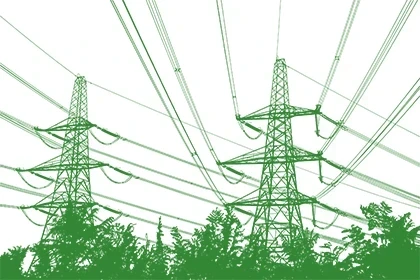A Natural Solution for a Changing Climate

The article from The Nature of Things explores how beavers, often seen as pests, could become an unexpected solution to the increasing challenges posed by climate change, particularly in relation to droughts impacting farmlands. By examining how these industrious creatures could offer a natural way to retain water in the landscape, this topic delves into the intersection of ecology, agriculture, and climate resilience.
Beavers: Nature’s Water Engineers
Beavers are known for their ability to build dams, but these structures do far more than just provide a home for the animals. Beaver dams play a crucial role in enhancing water retention in ecosystems, which could be beneficial for farmlands experiencing the effects of prolonged droughts. In regions facing extreme weather conditions brought on by climate change, such as reduced rainfall and higher temperatures, beaver-created wetlands could serve as natural reservoirs, storing water during times of abundance and gradually releasing it during drier spells.
This ability to regulate water flow has caught the attention of researchers and farmers alike. The process of dam-building begins when beavers cut down trees, branches, and shrubs to construct their dams. These structures trap water in ponds, creating wetlands that help maintain moisture in the soil, regulate stream flows, and mitigate the impact of floods and droughts. For farmers struggling with dry spells, beaver ponds could serve as natural irrigation systems, providing a steady water source for crops without the need for expensive infrastructure or over-reliance on groundwater.
The Growing Problem of Droughts
Droughts are becoming more frequent and severe as global temperatures rise due to climate change. Agriculture, which relies heavily on stable weather patterns and consistent water supply, is particularly vulnerable to these shifts. In many parts of the world, including Canada, where this documentary is focused, farmers have been grappling with reduced water availability for irrigation. The demand for irrigation systems has increased, leading to greater strain on natural water sources.
In some areas, the over-extraction of groundwater and water from rivers for irrigation purposes has resulted in ecosystem imbalances, with wetland areas drying up and aquatic species struggling to survive. The conventional approach to drought management has often involved the construction of reservoirs or the pumping of groundwater, but these solutions are costly, often inefficient, and come with environmental drawbacks.
This is where beavers come in. By creating wetlands through their dam-building activities, they effectively increase water retention in the landscape, offering a natural alternative to engineered water storage solutions. Their ability to hold water within the environment could be a game-changer for farmers who are grappling with the realities of a changing climate.
Ecological Benefits Beyond Water Retention
While the primary benefit of beaver dams in the context of drought management is water retention, the environmental benefits extend beyond just agriculture. Beaver ponds create rich, biodiverse ecosystems that support a variety of plant and animal species. These wetlands provide critical habitats for amphibians, birds, and other wildlife, enriching the local biodiversity and contributing to healthier ecosystems overall.
The role of beavers in wetland restoration has been increasingly recognized by conservationists. Wetlands are vital for regulating water quality, preventing soil erosion, and supporting biodiversity. Beaver dams enhance these natural processes by creating the conditions needed for wetland ecosystems to thrive. In fact, some conservation organizations have begun to view beavers as allies in the effort to restore degraded landscapes.
Additionally, beaver ponds help reduce the risk of flooding. By slowing down the flow of water in streams and rivers, beaver dams prevent the rapid surges that can lead to destructive floods. This flood prevention is especially important in areas where rainfall patterns are becoming more erratic, with periods of heavy rain followed by dry spells.
Reintroducing Beavers to Farmland Areas
While beavers can offer substantial ecological benefits, their presence is not always welcomed by farmers. In some cases, beavers’ dam-building activities can cause damage to agricultural infrastructure, such as flooding fields or blocking irrigation channels. However, this negative perception is changing as more people recognize the long-term benefits of working with nature instead of trying to control it.
Efforts to reintroduce beavers to farmland areas where they have been historically absent are underway in some regions. These initiatives often involve working with farmers to manage beaver populations in a way that maximizes the benefits while minimizing potential conflicts. For example, beavers can be encouraged to build dams in areas that are less likely to interfere with agricultural operations, or structures can be built to protect sensitive infrastructure from flooding.
In some cases, farmers have been able to see the benefits of beaver activity firsthand. With careful management, beaver ponds can offer a steady water supply during dry periods, reducing the need for artificial irrigation systems and improving crop yields. In some regions, farmers have even begun to view beavers as partners in managing water resources, rather than as pests to be eradicated.
A Natural Solution for a Changing Climate
In the face of climate change, beavers could provide a valuable tool for farmers and environmentalists alike. By utilizing the natural water management systems that beavers create, we could reduce the environmental impact of human interventions and promote more sustainable agricultural practices. The increasing recognition of beavers’ role in drought management, wetland restoration, and flood prevention reflects a growing shift toward working with nature to solve environmental challenges.
As the world faces the pressures of climate change, innovative solutions like this offer hope for building resilience in agricultural systems and protecting ecosystems. Whether they are seen as natural engineers or unexpected heroes, beavers have the potential to make a significant impact in the battle against droughts and the effects of climate change, providing a natural, low-cost, and effective solution to some of our most pressing environmental challenges.









